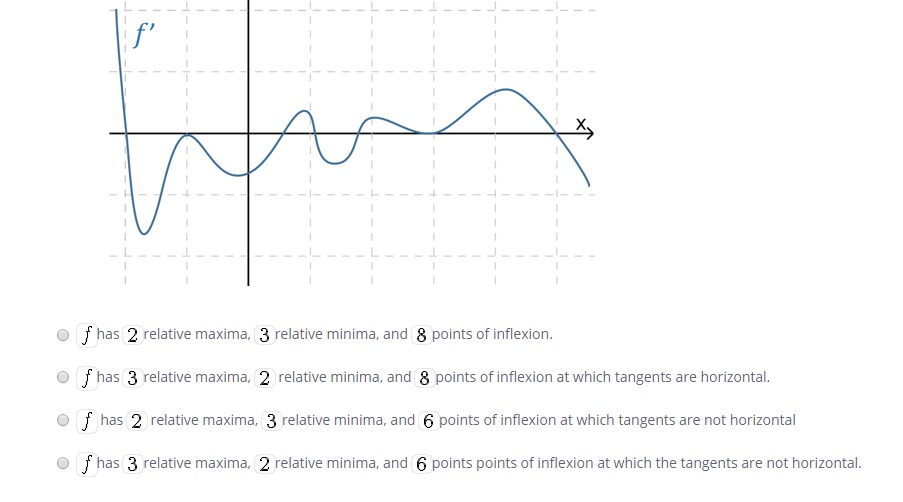It's a calculus problem?

1 Answer
Explanation:
-
At a local maximum, the derivative will transition from positive to negative. We see
3 examples wheref' intersects thex axis, changing from positive to negative. So there are3 local maxima. -
At a local minimum, the derivative will transition from negative to positive. We see
2 examples wheref' intersects thex axis, changing from negative to positive. So there are2 local minima. -
At a point of inflexion where the tangent is not horizontal, the derivative
f' has a local maximum or minimum but does not touch thex axis. There are6 examples of that in the given graph off' .
So

